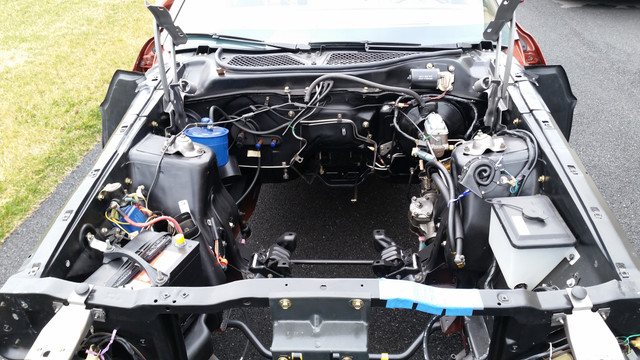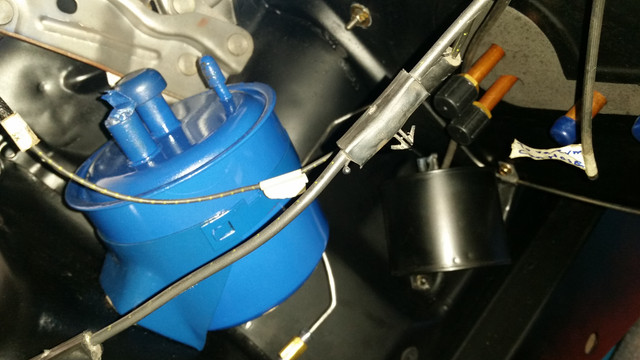scottyrocks
Member
- Joined
- Mar 10, 2018
- Messages
- 19
- Reaction score
- 0
- Location
- Long Island, NY
- My Car
- 1973 Mustang Mach 1
I am preparing to put a new fuel tank into my '73 Mustang.
When I took the fuel vapor separator out of the old tank, some black stuff fell out of it. When I touched it, it crumbled. What material is it? Is it necessary?
I ask is because when I was inspecting the unit, it appears that the metal tube that comes out of it, that the rubber hose from the charcoal canister (?) connects to, has no opening at the other end, inside the unit. I stuck a small wire in it to see if would go through where I couldn't see, but nothing.
What is the purpose of having a tube that goes to a dead end in a fuel tank? Or is mine just somehow jammed solid at the inner end with dirt, maybe?
When I took the fuel vapor separator out of the old tank, some black stuff fell out of it. When I touched it, it crumbled. What material is it? Is it necessary?
I ask is because when I was inspecting the unit, it appears that the metal tube that comes out of it, that the rubber hose from the charcoal canister (?) connects to, has no opening at the other end, inside the unit. I stuck a small wire in it to see if would go through where I couldn't see, but nothing.
What is the purpose of having a tube that goes to a dead end in a fuel tank? Or is mine just somehow jammed solid at the inner end with dirt, maybe?
Last edited by a moderator:








